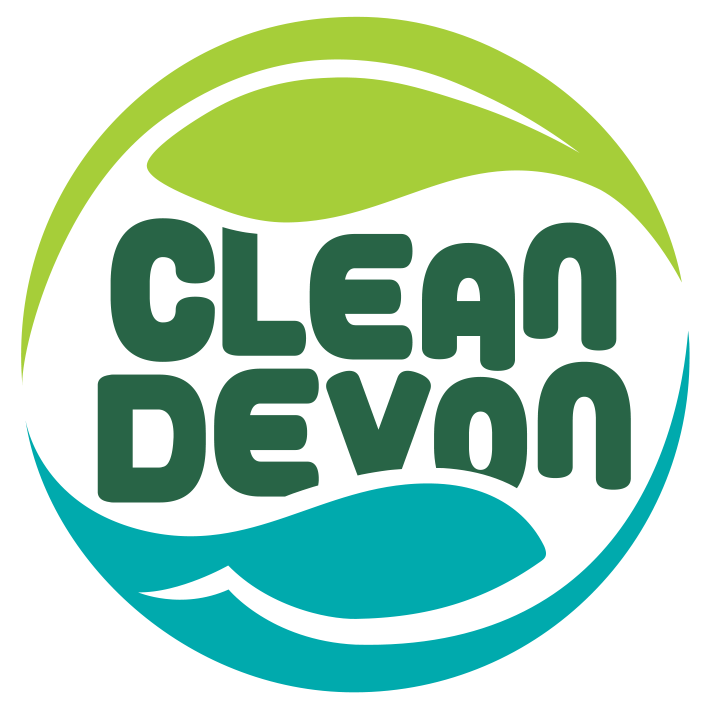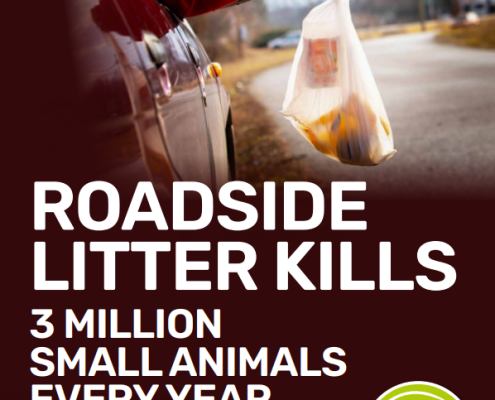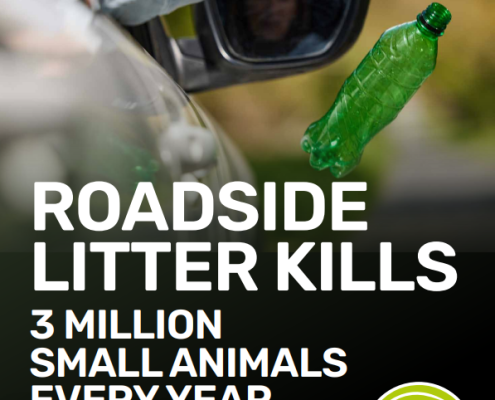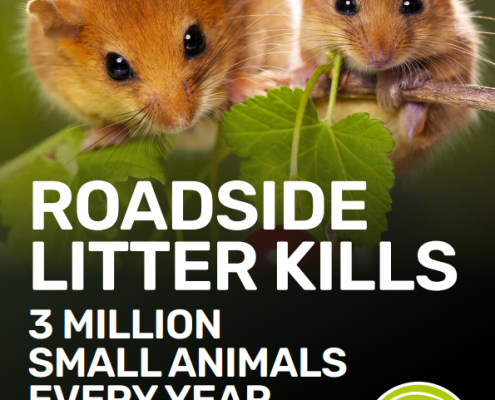How does litter kill wildlife?
Estimates suggest that vehicle litter alone, such as bottles and cans, kills 3 million small animals every year. One of the main reasons for this is that bottles and cans thrown from vehicles typically land ‘heavy end down / open end up’ on verges and in our hedges. Inquisitive small animals looking for food or a home, such as the endangered hazel dormouse, can easily climb into these bottles and cans, but can’t get out again and die. As any litter picker knows, most roadside litter contains the remains of many different small animals and invertebrates, and where uncollected, this litter has the potential to keep trapping more and more helpless creatures.
Bags of rubbish or fast-food packaging can also attract larger scavenging animals and birds, including foxes and hedgehogs, to the roadside where the risks of choking, injury, poisoning, or being hit by traffic increase significantly.
Plastic packaging, including bags of discarded dog poo in the countryside, can also be responsible for significant harms to wildlife and livestock.
The RSPCA received 10,000 reports of animals found injured, trapped, or dead from discarded litter.
Litter can also block drains leading to flooding, and where it does eventually enter a watercourse such as stream or river, it will eventually end up in our oceans contributing to significant harms to sea life.
Put simply, litter is bad for our environment, wildlife, livestock, and people.





